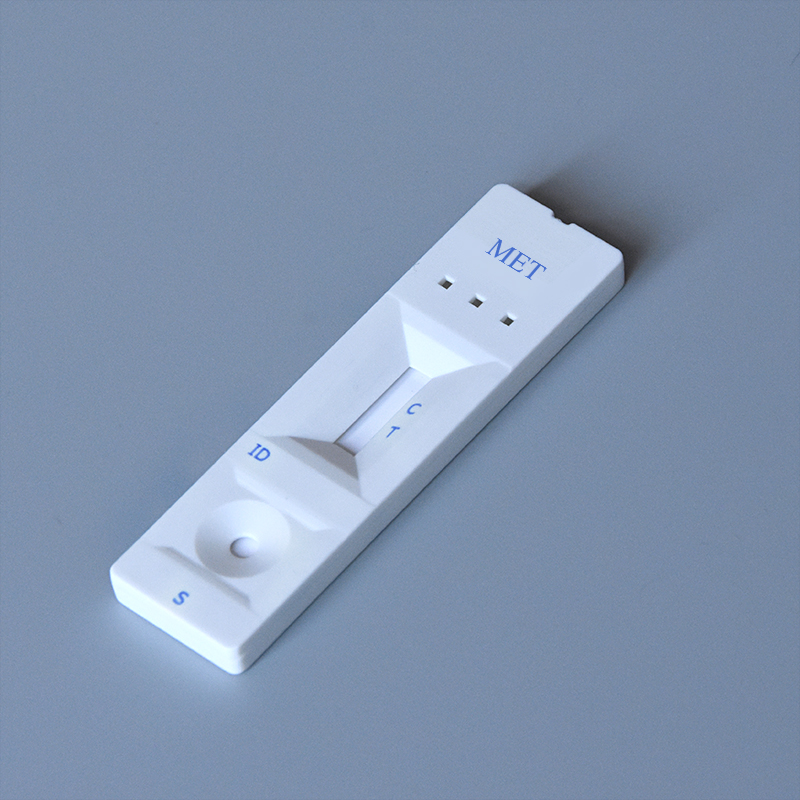វិច្ឆិកា . 26, 2024 17:15 Back to list
Empty Cassette for Lateral Flow Rapid Testing Applications and Use Cases
Understanding Lateral Flow Rapid Tests The Role of Empty Cassettes
Lateral flow rapid tests have gained significant prominence in recent years, especially in the context of infectious disease detection and public health. These tests are particularly valuable for their speed, simplicity, and adaptability. At the heart of these tests is a component known as the cassette, which plays a crucial role in the test's functionality. This article will explore the significance of empty cassettes in lateral flow tests, shedding light on their design, usage, and impact on diagnostic processes.
What Are Lateral Flow Tests?
Lateral flow tests (LFTs) are a type of immunoassay used to detect the presence of specific substances, such as pathogens or biomarkers, in a sample. They are commonly utilized for diagnosing various conditions, including viral infections like COVID-19, pregnancy, and certain cancers. The term lateral flow refers to the way the sample moves along a strip of materials, typically through capillary action.
The tests consist of several components a sample pad where the sample is applied, a conjugate pad containing antibodies that bind to the target substance, a nitrocellulose membrane where the results are displayed, and an absorbent pad that helps wick away excess fluid. The design is streamlined, allowing for easy use in various settings, from hospitals to home testing.
The Role of the Empty Cassette
An empty cassette is a crucial element in the lateral flow testing process. This enclosed structure provides the environment for the test components, ensuring that the test operates under optimal conditions. Its primary functions include protecting the test materials from contamination, providing a controlled space for the reaction to occur, and making it easier for users to handle the test.
The empty cassette is typically made of plastic and features an opening for sample application. It is designed to house the test strip securely, facilitating the flow of the sample through the various components. The cassettes are often manufactured in a way that minimizes the risk of cross-contamination, which could lead to inaccurate results.
Advantages of Lateral Flow Tests with Empty Cassettes
lateral flow rapid test empty cassette

1. Speed of Results Lateral flow tests are renowned for their rapid result delivery, often within 15 to 30 minutes. The empty cassette design allows for efficient sample processing and easy interpretation of the results.
2. User-Friendly Design The compact nature of the cassettes makes them easy to use, even for individuals without medical training. Clear visual indicators, such as control lines, help users interpret results quickly and accurately.
3. Portability and Accessibility Lateral flow tests in cassettes can be used in various settings, including remote locations. They do not require complicated equipment or laboratory facilities, making them accessible for widespread testing.
4. Customization for Different Tests Empty cassettes can be easily adapted for different types of tests. By changing the composition of the test strip inside the cassette, manufacturers can create tests for various pathogens or biomarkers, enhancing their versatility.
Challenges and Considerations
While lateral flow tests in empty cassettes offer many advantages, they are not without challenges. The accuracy of the tests can be influenced by several factors, including the quality of the reagents, the design of the test components, and the user’s adherence to the instructions. Furthermore, some tests may have limitations regarding sensitivity and specificity, highlighting the need for validation against more traditional diagnostic methods.
Conclusion
Lateral flow rapid tests using empty cassettes represent a significant advancement in diagnostic technology. Their design simplicity, rapid result delivery, and user-friendly nature address many of the challenges faced in public health testing. As the demand for quick and reliable diagnostic solutions continues to grow, the evolution of lateral flow tests will undoubtedly play a pivotal role in enhancing healthcare delivery and improving patient outcomes. Understanding the foundational components, like the empty cassette, provides insight into the remarkable function and utility of these tests in modern medical practice.
-
China Nylon Flocking Swabs - AI Enhanced Quality Collectors
NewsAug.03,2025
-
Highly Accurate hCG Pregnancy Test Strips - 5 Min Results
NewsAug.02,2025
-
Premium Empty ABS Plastic Cassettes: Durable & Lightweight Storage
NewsAug.01,2025
-
Accurate Cocaine (Coc) Rapid Test Kit | Fast & Reliable Detection
NewsJul.31,2025
-
Accurate HCG Pregnancy Test Strips | Fast Home Use Kit
NewsJul.31,2025
-
Reliable Early Pregnancy Test Kit Supplier - Multi Plastic Cassette Options
NewsJul.30,2025

